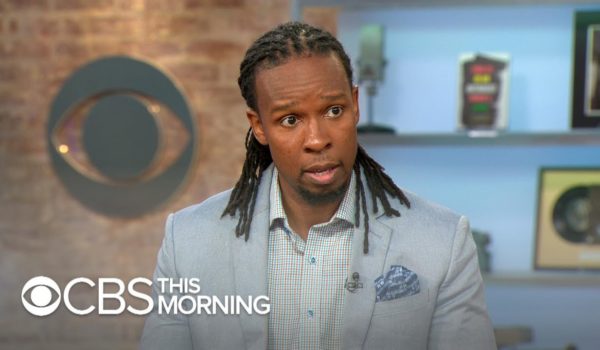
The Wall Street Journal published a letter from me today in response to George Soros’s op-ed about our criminal justice system and why he bankrolls the election of progressive prosecutors who are lenient toward offenders. Or rather, it published part of my letter, this part:
Mr. Soros writes, “We need to acknowledge that black people in the U.S. are five times as likely to be sent to jail as white people. That is an injustice that undermines our democracy.” But reducing the black incarceration rate to the white rate would require releasing vast numbers of dangerous criminals, most of whom preyed on other black people. Innocent black people would be harmed the most.
Unfortunately, the Journal published only a small part of the letter I sent it, deleting all of the supporting studies that I cited (such as how black people suffer most from black crime, and how the crime rate is much higher in the black community).
So if readers like Mr. Soros wonder why I believe as I do, here is the full letter I sent to the Journal:
Contrary to George Soros’s claim, it’s not unjust that different groups have different incarceration rates. (“Why I Support Reform Prosecutors,” Op-ed, Aug. 1, 2022).
In homicide crimes, “the offending rates for blacks were more than 7 times higher than the rates for whites” between 1976 and 2005, according to the federal Bureau of Justice Statistics. Due to this higher black crime rate, it is only natural that blacks will be incarcerated at a higher rate than whites.
Soros writes that “We need to acknowledge that black people in the U.S. are five times as likely to be sent to jail as white people. That is an injustice that undermines our democracy.”
But reducing black incarceration rates to the white rate would require releasing vast numbers of dangerous black criminals, most of whom preyed on other black people. That would harm innocent black people most. That’s because crime victims are overwhelmingly of the same race as their attacker. As the Bureau of Justice Statistics has explained, crimes are committed mostly between members of the same race, and that is true for “all types of violent crime except robbery.”
The letter I submitted was less than 200 words, since I knew that virtually no letter to the editor gets published if it is more than 200 words (the Journal chopped my letter down to a mere 68 words in publishing it). If longer letters had a chance of being printed, I would have added to my letter citations to studies showing that incarceration rates largely reflect crime rates, rather than racial bias.
For example, a 2021 study by the federal Bureau of Justice Statistics found that although blacks are arrested for serious nonfatal violent crimes at more than twice the rate of people in general, this is not due to racism. Instead, arrests are correctly “proportional” to the actual crime rate (which is higher among blacks than among whites), and to the crimes actually reported to the police, which often are committed by black offenders. As it noted, “white and black people were arrested proportionate to their involvement in serious nonfatal violent crime overall and proportionate to their involvement in serious nonfatal violent crime reported to police.” (See Allen J. Beck, Race and Ethnicity of Violent Crime Offenders and Arrestees, 2018).
Statisticians know different racial groups have different crime rates. In homicide crimes, “the offending rates for blacks were more than 7 times higher than the rates for whites” between 1976 and 2005, according to the federal Bureau of Justice Statistics. (See BJS, Homicide Trends in the United States).
Surveys of crime victims indicate that violent criminals are disproportionately black. These surveys are not affected by racism. That’s because crime victims are overwhelmingly of the same race as their attacker, and are disproportionately black. As the Bureau of Justice Statistics explains, crimes are committed mostly between members of the same race, and this is true for “rape or sexual assault,” “simple assault,” “aggravated assault,” and indeed, “all types of violent crime except robbery.” (See Race and Hispanic Origin of Victims and Offenders, 2012-2015.)
Prison inmates are seldom harmless drug users. In 2017, the Bureau of Justice Statistics found that over 55 percent of state prison inmates in America were there for “violent offenses,” and only 15 percent for drug crimes (such as drug dealing and manufacturing). And most people in prison for drug crimes are not there just for using drugs: As the progressive Marshall Project noted in 2015, “only 4 percent” of state prison inmates “are there for drug possession. An additional 12 percent are incarcerated for drug sales, manufacturing, or trafficking.”



